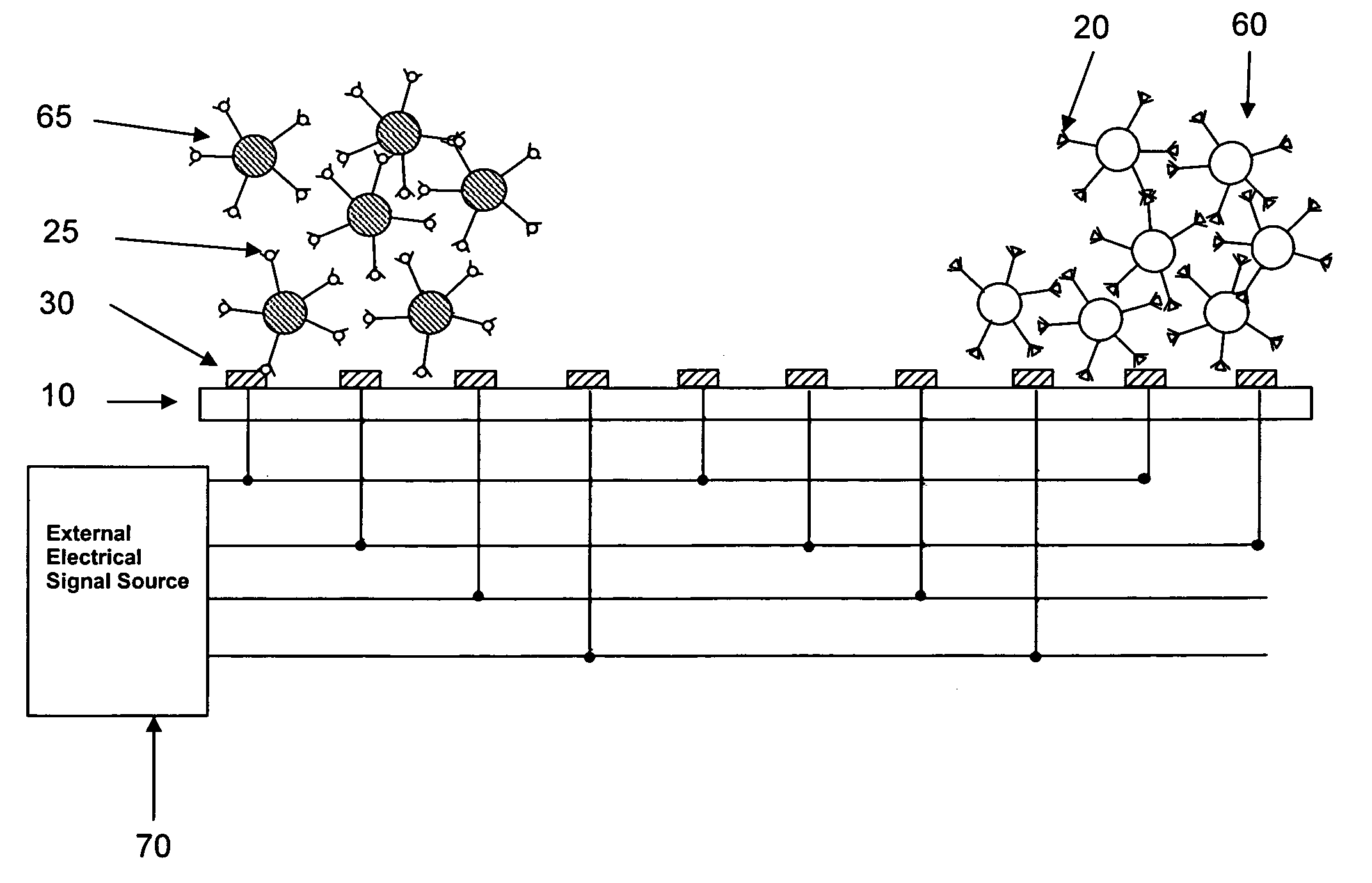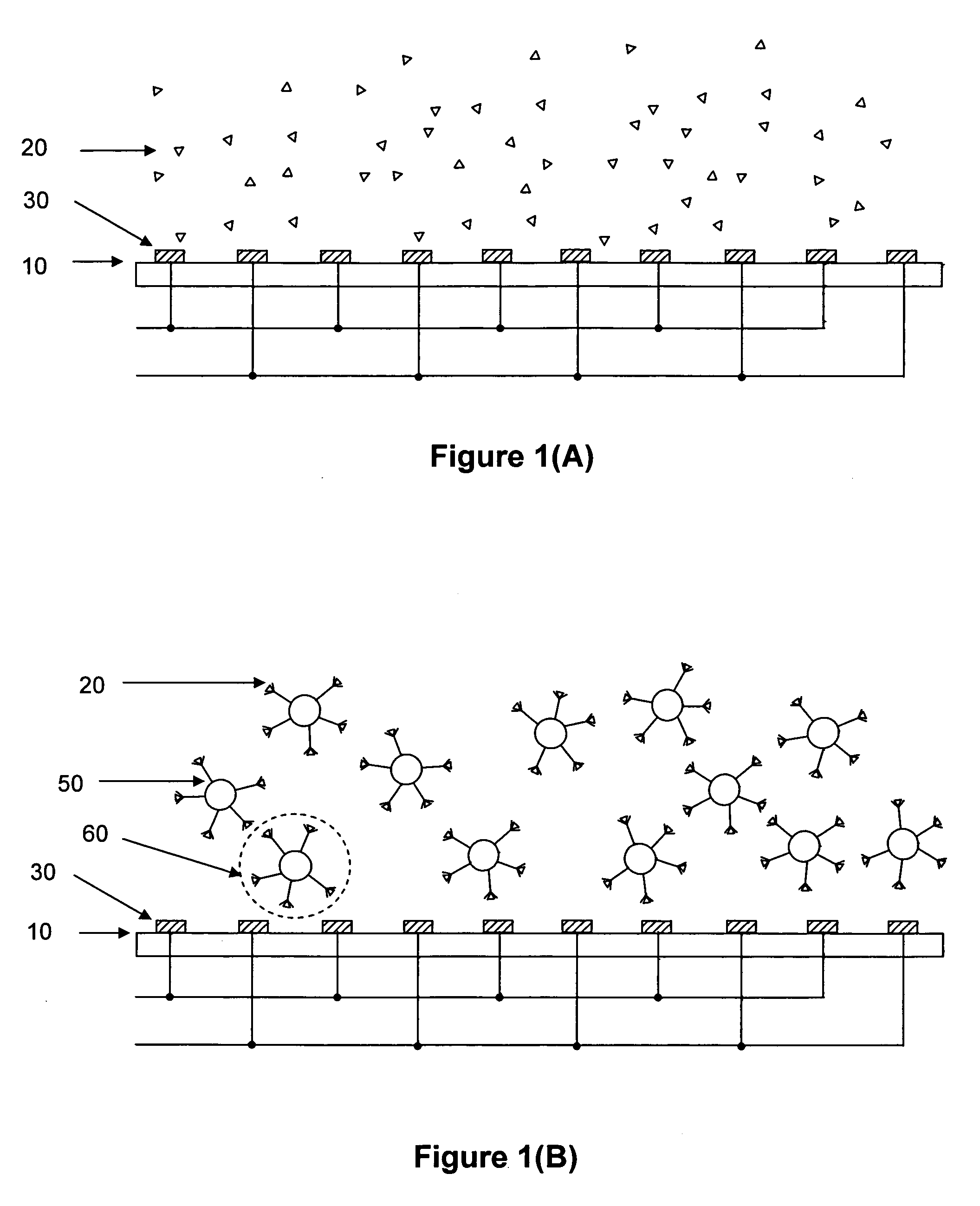Methods for manipulating moieties in microfluidic systems
a microfluidic system and moiete technology, applied in electrostatic separators, electrolysis, isotope separation, etc., can solve the problems of not having a general method for manipulating molecules in microfluidic devices, unable to achieve sufficient dc field in aqueous solutions, and unable to cause undesired effects, etc., to achieve the effect of expanding and enhancing the capabilities of molecule manipulation, simplifying and standardizing the design
- Summary
- Abstract
- Description
- Claims
- Application Information
AI Technical Summary
Benefits of technology
Problems solved by technology
Method used
Image
Examples
Embodiment Construction
[0072]A. Definitions
[0073]Unless defined otherwise, all technical and scientific terms used herein have the same meaning as is commonly understood by one of ordinary skill in the art to which this invention belongs. All patents, applications, published applications and other publications and sequences from GenBank and other data bases referred to herein are incorporated by reference in their entirety.
[0074]As used herein, “microfluidic application” refers to the use of microscale devices, e.g., the characteristic dimension of basic structural elements is in the range between less than 1 micron to cm scale, for fluidic manipulation and process, typically for performing specific biological, biochemical or chemical reactions and procedures. The specific areas include, but are not limited to, biochips, i.e., microchips for biologically related reactions and processes, chemchips, i.e., microchips for chemical reactions, or a combination thereof.
[0075]As used herein, “moiety” refers to an...
PUM
| Property | Measurement | Unit |
|---|---|---|
| diameter | aaaaa | aaaaa |
| size | aaaaa | aaaaa |
| diameter | aaaaa | aaaaa |
Abstract
Description
Claims
Application Information
 Login to View More
Login to View More - R&D
- Intellectual Property
- Life Sciences
- Materials
- Tech Scout
- Unparalleled Data Quality
- Higher Quality Content
- 60% Fewer Hallucinations
Browse by: Latest US Patents, China's latest patents, Technical Efficacy Thesaurus, Application Domain, Technology Topic, Popular Technical Reports.
© 2025 PatSnap. All rights reserved.Legal|Privacy policy|Modern Slavery Act Transparency Statement|Sitemap|About US| Contact US: help@patsnap.com



